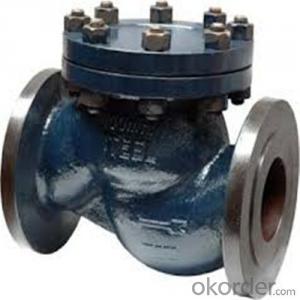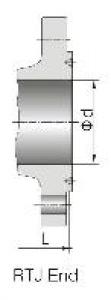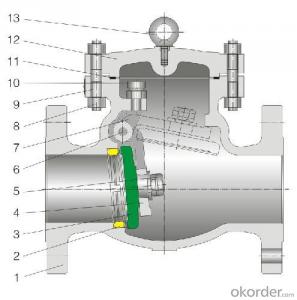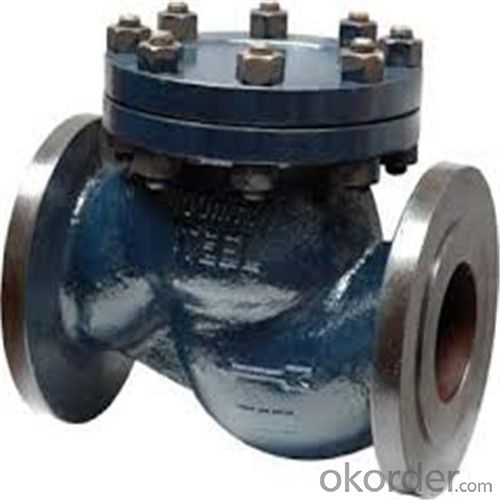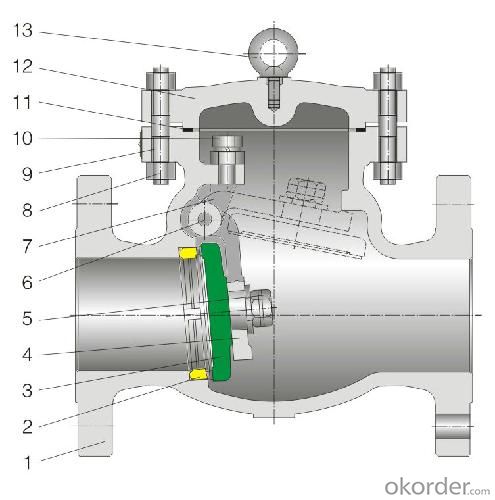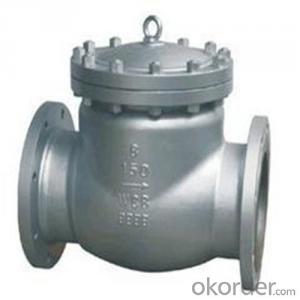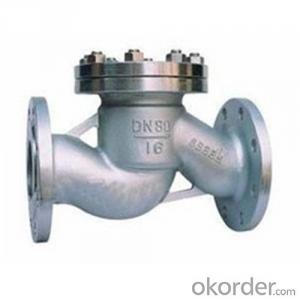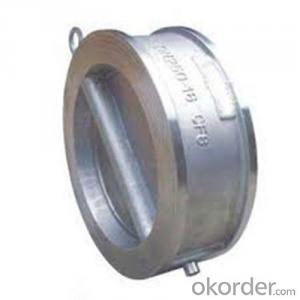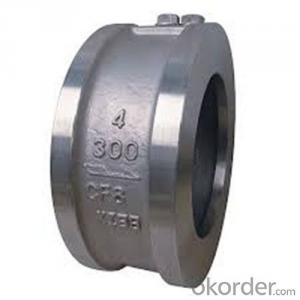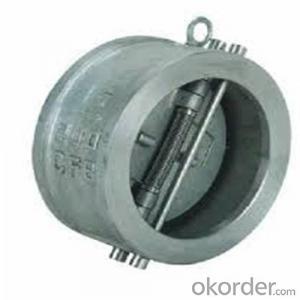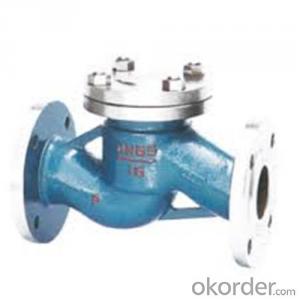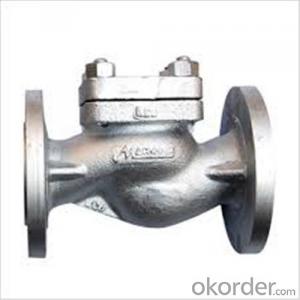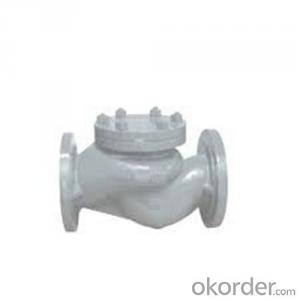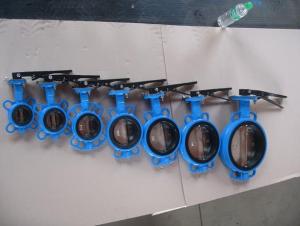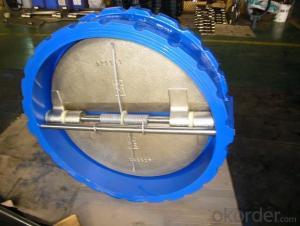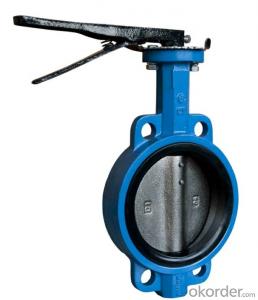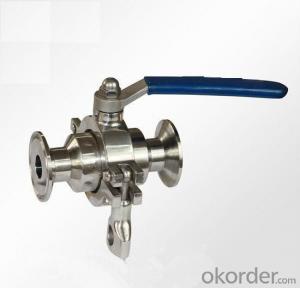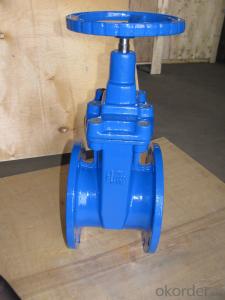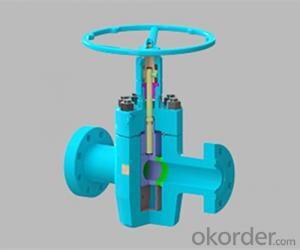API Cast Steel Lift Check Valve 600 Class
- Loading Port:
- Shanghai
- Payment Terms:
- TT OR LC
- Min Order Qty:
- 10 pc
- Supply Capability:
- 100 pc/month
OKorder Service Pledge
OKorder Financial Service
You Might Also Like
API Cast Steel Lift Check Valve 150 Class
The features of Cast Steel Lift Check Valve
Bolted Bonnet;Swing and lift disc;Metallic seating surfaces.
Body and Bonnet Connection of Cast Steel Lift Check Valve:
The body and bonnet of Class150~Class900 check valves are usually with studs and nuts.And the body and bonnet of Class1500~Class2500 check valves are usually of pressurized seal design.
Body-To-Bonnet Joint of Cast Steel Lift Check Valve:
Stainless steel + flesible graphite wounded gasket is used for Class 150 and Class 300 check valve;Stainless steel + flexible graphite wounded gasket is used for Class 600 check valve,and joint gasket is also optional for Class 600 check valve;Ring joint gasket is used for Class900 check valve;Pressurized seal design is used for Class 1500~Class 2500 check valves.
Seat of Cast Steel Lift Check Valve:
For carbon steel check valve,the seat is usually forged steel.The sealing surface of the seat is spray welded with hard alloy specified by the customer.Renewable threaded seat is used for NPS<10 check="" valves="" and="" welded="" on="" seat="" can="" be="" also="" optional="" if="" being="" requested="" by="" the="" customer.welded="" is="" used="" for="" nps="">12 crbon steel gate valves .Forstainless steel check valve,integral seat is usually adopted ,or to weld hard alloy directly integrally.Threaded or welded on seat is also optional for stainless steel check valve if being requested by the customer.
Parameter of Cast Steel Check Valve:
Standard Criteria | ASME/ANSI/API customize |
Pressure Rating | 150 Class 300 Class 600 Class 900 Class 1500 Class 2500 Class customize |
Valve Size | 50 mm 65 mm 80 mm 100 mm 125 mm 150 mm 200 mm 250 mm 300 mm 350 mm 400 mm 450 mm 500 mm 600 mm 650 mm 700 mm 750 mm |
2 inch 2.5 inch 3 inch 4 inch 5 inch 6 inch 8 inch 10 inch 12 inch 14 inch 16 inch 18 inch 20 inch 24 inch 26 inch 28 inch 30 inch customize | |
Actuator | Automatic customize |
Connection | Butt Welding Flange RF Flange RTJ customize |
1-Body Material | A216 WCB A351-CF8 A351-CF8M customize |
2-Seat ring | A351-CF8 A351-CF8M A105+13Cr Tool Steel+A105 customize |
3-Disc | Tool Steel+A216 WCB A351-CF8M A351-CF8 A216 WCB+13Cr customize |
4-Arm | A351-CF8 A216 WCB A351-CF8M customize |
5-Nut | A194 8M A194-8 A194 2H customize |
6-Arm pin | A182-F6a A182-F316 A182-F304 customize |
7-Yoke | A351-CF8 A351-CF8M A216 WCB customize |
8-Bonnet nut | A194 8M A194-8 A194 2H customize |
9-Bonnet bolt | A193-B8 A193-B8M A193-B7 customize |
10-Bolt | A193-B7 A193-B8 A193-B8M customize |
11-Gasket | graphite+304 graphite+316 customize |
12-Bonnet | A216 WCB A351-CF8M A351-CF8 customize |
13-Eye bolt | A181 customize |
Design Standard | API 6D BS 1868 customize |
Connection Standard | API 605 ASME B 16.25-2007 ASME B 16.47A ASME B 16.47B ASME B 16.5 MSS SP-44 customize |
Test Standard | API 598 API 6D customize |
Face to Face | ASME B 16.10 customize |
Pressure-temperature ratings | ASME B 16.34-2004 customize |
Wall thickness dimension | API 600 BS 1868 |
FAQ of Cast Steel Check Valve:
Q1:I can’t find the type of steel check valve which I need. what can I do?
The chart above only lists out some common composition of steel check valve parts.We may provide other different parts material composition according to the customer's request or the actual valve working condition.
Q2:Which certification do your products pass?
Our products are in accordance with ISO 9001、ISO 14001、API 6A、API 6D、TS CE、API607/6FA/BS6755.
- Q: when there is fire in the building, the solenoid valve is activated but what happen inside the cylinder actally?
- If the pressure in any one zone is different than the other zones it could be one of two reasons; either the pressure is high (usually due to one or more sprinkler heads not poping up), or its low (usually due to a leak in the pipes). Something that could cause low pressure in all the zones are an obstruction in the water line above the valves (unlikely), or a hole in the line above the valve (the water would be filling the valve box and causing damage to the lawn wherever it is located), or leaks in all the lines (again would be easy to identify from the excess water in the ground at the source of the leak). Lastly the valve itself could potentially be faulty. The solenoid inside the valve holds the valve open when electricity is applied across it. If the wires to it are damaged; if the solenoid is bad; or if the valve has any rust or dirt inside that could cause a lower than normal amount of water flow.
- Q: What are the types of control valves used in the oil industry and how are they applied.
- There are other manual control valves and on/off automatic valves that are used a various places for remote or emergency control. These can be globe, gate, ball, plug or butterfly valves. They can be actuated by pneumatics, hydraulics or electric power.
- Q: Hey,Recently purchased a 2006 Audi A4 2.0T Q S-Line. Loving it so far but i can barley hear the blowoff valve if at all. So i am in the market for the loudest blowoff valve. I realize its a very tiny turbo but id still like to hear it and maybe even turn some heads. If anyone can help me out i would greatly appreciate it. Thank you
- Loud Blow Off Valve
- Q: It's filling up a 5 gallon bucket roughly ever 9-10 hours. It was leaking with an old valve and has been replaced, and after being replaced it didn't stop. The temperature has not been adjusted higher or lower, it's exactly where it was for the year before the leak started. Any ideas?
- Mike, Since you haven't raised the Temperature setting on the heater which could cause this problem, you either got a bad replacement p/t valve OR maybe it was a cheepo. If that's the case, I would replace it with a good brand return the other one after you find the new on works right.
- Q: I just bought a brand new rain bird sprinkler valve with flow control and when I turn the valve on automatically or manually it makes a loud sound that resembles a muted horn and when I close it, it makes the same sound but thumps at the end. Is this normal? Or do I need to get a new valve?
- It could be the solenoid. It could be actuating very slowly and hammering when it tries to shut off. The solenoids are only $5 or $6. Not a significant expense. I just had to replace an entire valve. Not costly but a good size hole while I was working on it.
- Q: Can anyone recommend valve manufacturers who make a good electric high temperature valve. The temperature that I am looking at is 1600 F at 100 psi. It should be electric magnetism controled. Is there anybody know what is the highest temperature the valve can bear in the world?
- google 'inconnel valve' look for foundry equipment suppliers Can you valve the gas away from whatever is hot, or is your gas at 1600 F and 100 PSI ? If so, what are you using for piping ?
- Q: I know i have to buy a recirculating valve but should i drop 250 on the perrin or will any brand do? how important is a high quality BOV?
- Make sure you get a tune with the BOV, you might encounter engine problems such as stalling.
- Q: Can leakage of heart mitral valve be treated with homeopathic medicines?My grandmom has leakage in mitral valve. I am searching for options to other than surgery to make it less painful for her. She' is above 80yrs of age. If you know of any good options for treatment , please let me know as we also consult the doctors. thank u :)
- Homeopathic medicine is definitely not the way to go. Do some research on how they get to the final solution they sell you.
- Q: Anyone know what causes a heart valve to leak? I had surgery to repair mine (mitral) a few months ago, and now I have a very mild leak.
- The leak is called regurgitation or prolapse .. Here is a little example. Hold up your hands and put your index fingers tip to tip .. like they are pointing at each other. These two fingers will represent the valve's 'leaflets.' Operating normally, your 'leaflets' will open and close together, like a trap door. Now, within your heart's chambers, blood is supposed to flow in only one direction. It is the valve's job to ensure that blood only goes in one direction in each chamber. There are four valves .. tricuspid, pulmonic, mitral and aortic, and four chambers. In a normal valve, the sides open and close in unison with the help of regulating 'cords' that work much like a parachute's cords. If these 'cords' weaken, the valve will leak. Much like a bodybuilder that stops working out and gets flabby, these cords can get 'flabby,' (stretch) and become unable to operate the heart's valve efficiently. Sometimes, the leaflets thicken as a result of infection like rheumatic fever or endocarditis. The thickening will prevent the leaflets from closing tightly (... imagine them being slightly weighted... ) and blood will flow backwards through the valve. Aging, previous heart attacks and congenital birth defects are also common causes of heart valve disorders.
- Q: My furnace cut out about a year ago. The hvac guy i used told me the gas valve was no good and that the flu was partially blocked. I cleaned out the flu, he replaced the gas valve ($700+) and it worked great for a year. Today the furnace does not fire up. Pilot is working. I cleaned out the flu (there was definitely quite a bit of debris, so that was probably the cause for the shut off) .... The flu is now clear, but when i turn the system back on the thermostat calls for heat, but there is no gas flow to the burner... could the valve have failed that quick, or should i be looking at something else like the CO sensor or something... just looking for some direction before shelling out another 700 bucks... Thanks in advance for any ideas or assistance....
- I was wondering why the flue is clogged? I've never had to clean mine. Well anyway, I use a shop vac to vacuum out any dust or rust that accumulates on the gas valve on the rare occasions it failed to work,and that fixed it every time.
Send your message to us
API Cast Steel Lift Check Valve 600 Class
- Loading Port:
- Shanghai
- Payment Terms:
- TT OR LC
- Min Order Qty:
- 10 pc
- Supply Capability:
- 100 pc/month
OKorder Service Pledge
OKorder Financial Service
Similar products
Hot products
Hot Searches
Related keywords
